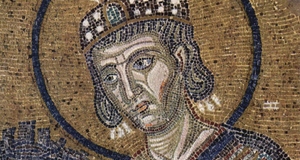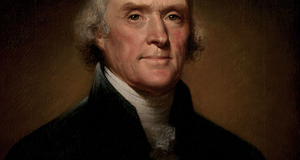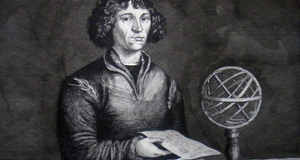Thomas Arundel's Constitutions and the Condemnation of Wycliffe's Vernacular Translations (1382-1415)
By
2015, Vol. 7 No. 05 | pg. 1/2 | »
KEYWORDS:
Between the publication of Wycliffe’s Bible in 1382 and the Council of Constance in 1415, a thirty-year period in which there was no shortage of ecclesiastical and secular condemnations of Wycliffe’s writings, Arundel’s Constitutions became one of the few documents from the period that explicitly condemned the act of translation itself. In this paper, I suggest a number of probable reasons that might have conditioned Arundel’s condemnation of Wycliffe’s vernacular bible. The first is related to scholastic and ecclesiastical attitudes toward the transmission of knowledge in the later Middle Ages. The second is related to the social and political upheavals in England during the late 14th and early 15th centuries, which Arundel viewed as stemming at least in part from the writings of Wycliffe and his followers (otherwise known as the Lollards). In addition, I examine Arundel’s Constitutions in connection with Henry IV’s (1399-1413) De Hæretico Comburendo, which is evidence of the cooperation between the Church and the Crown to control the spread of the Lollard heresy.
Constitutions, Seventh Condemnation:
“The translation of the text of Holy Scripture out of one tongue into another is a dangerous thing; as blessed Jerome testifies, because it is not easy to make the sense in all respects the same; as the same blessed Jerome confesses that he made frequent mistakes in this business, although he was inspired: therefore we enact and ordain that no one henceforth do by his own authority translate any text of Holy Scripture into the English tongue or any other by way of book, pamphlet, or treatise. Nor let any such book, pamphlet, or treatise now lately composed in the time of John Wicklif aforesaid, or since, or hereafter to be composed, be read in whole or in part, in public or in private, under pain of the greater excommunication, till that translation have been approved by the diocesan of the place, or if occasion shall require, by a provincial Council. Let him that do contrary be punished in the same manner as a supporter of heresy and error.”[1] Before examining Arundel’s Constitutions in depth, it remains to briefly chronicle the more significant condemnations against both Wycliffe and the Lolland movement which developed after his death. John Wycliffe was an English theologian and Oxford don during the latter half of the 14th century. In 1382, the year in which Wycliffe published his vernacular bible, a series of Papal and ecclesiastical condemnations were leveled against Wycliffe’s writings, including at the Blackfriars Council, Earthquake Synod, and a Papal Bull from Pope Gregory XI. In 1401, Henry IV issued his De Hæretico Comburendo before Parliament in which he condemned the growing Lollard movement and their writings. Six years later Arundel, Archbishop of Canterbury (1396-1414) issued his infamous Constitutions,2 which among other heresies, condemned Wycliffe’s translation of the vulgate. Following his Constitutions, Arundel set up a committee of Twelve (known as the Synod of Oxford) which over the course of two years produced a list of 267 heresies and errors in Wycliffe’s works.3 The cycle of condemnations reached its zenith at the Council of Constance in 1415, where it decreed “that [Wycliffe’s] body and bones are to be exhumed, if they can be identified among the corpses of the faithful, and to be scattered far from a burial place of the church, in accordance with canonical and lawful sanctions.”4 Yet, apart from Arundel’s Consititutions and Henry IVs De Hoeretico Comburendo none of these other texts explicitly condemns the act of vernacular translation. First, we must consider the question: why was Wycliffe’s vernacular translation not initially condemned? I argue that this was due primarily to the work’s size and therefore expense. Wycliffe’s Bible comprised roughly two large folio volumes.5 The importance of this fact is not merely in the scope of the work, but in its cost; a complete translation of the vulgate was hardly conducive for mass circulation. Margaret Deanesly estimates that the costs of a complete vulgate would have been equal to a vicar’s annual stipend.6 As such, most parish priests, let alone their parishioners, could hardly have afforded the expense of Wycliffe’s bible. The act of translation itself was therefore meant not for a mass audience, but for the small privileged elite of clerical and secular authorities. The translations limited appeal is probably one reason why there was no condemnation of Wycliffe’s vernacular translation itself during the 1380s. After Wycliffe’s death however, his followers (eventually labelled as Lollards) produced a number of further translations which were aimed at appealing to a wider readership than Wycliffe’s initial translation. The Lollards can be seen as a pre-cursor to the various protestant reform movements which emerged over a century later, as they sought the elimination of papal authority and clerical prerogatives, direct access to the word of God and the return to “God’s Law” which every man could discern through the reading of the scriptures.7 In 1395, John Purvey produced a second translation of Wycliffe’s bible. This is significant for two reasons, first Purvey’s translation was far shorter than Wycliffe’s, as it was intended to be used by Lollard preachers and thereby appeal to a wider audience. Second, Purvey’s translation was also coupled with a violently fanatical preface which espoused much of the Lollard movement’s ideological beliefs.8 Purvey’s vernacular translation could therefore be viewed as having a distinct social and political agenda, rather than merely a simple act of translation. At least part of the explanation for Arundel’s condemnation of vernacular translations lies in the traditional hostility of western Christianity towards the issue of translations in general. This was itself a heritage from the Roman era, for as Deanesly succinctly notes, “the real reason for the universal use of a Latin Bible and Latin services in the fourteenth century was the existence of Latin as a universal language in the western Roman empire in the fourth.”9 As such, it was usually not necessary to translate the scriptures for the purposes of missionary activities as the pagans that they aimed to convert were generally familiar with Latin, having been at least connected if not entirely integrated into the Roman linguistic sphere of influence.10 This becomes all the more apparent when one compares the attitude of western Catholicism to Greek Orthodoxy on the subject of the use of the vernacular. The visit of the Byzantine Emperor Manuel II to England in January 1401, presented this contrast quite openly to the English court.11 The Lollards were quick to point out the discrepancies between the Catholic and Greek services; whereas in England the mass was entirely in Latin the Greeks held service in their own offices, even the scriptures were noted to be in Greek.12 Friar Butler13 argued that vernacular translations undermined the various orders within the church: “Thus it is obvious that the reading of scripture translated into the vulgar tongue is the act of the superior, and is not to be elicited or commanded by the will of a person of the inferior order.”14. Friar Butler argued further that it is the duty of the clergy to instruct the laity verbally in what they deemed was necessary for their parishioners’ salvation. Underlining this argument is a defense for clerical authority, which Butler felt would be undermined by vernacular translations as it would lessen the laity’s dependence on the church for spiritual instruction. Additionally, Friar Butler touches upon an interesting aspect of the transmission of knowledge in the Middle Ages, namely within the framework of oral traditions. Oral transmission of knowledge was believed to be the best means by which to educate an individual in medieval society. Friar Butler cites St. Jerome to underpin his arguments: “St. Jerome says that hearing is a better manner of obtaining knowledge of Holy Scripture than reading, for the way of hearing is better, safer, and quicker, than the way of reading…..therefore the way of reading ought to be forbidden.”15 Connected to this conception of knowledge was a belief that the masses were incapable of comprehending the true mysteries of the bible. Friar Palmer argued that “[t]he secret things of God should be concealed from the simple, and not revealed to all men,”16 and that only “those things needful for salvation, and no other part of holy scripture, should be translated for them.”17 It is important to note that these conceptions of the transmission of knowledge with regards to vernacular translations found expression in official Church condemnations prior to the late 14th century. For instance, the Council of Toulouse (1229) declared translations of the bible into the vernacular as heresy,18 while Pope Urban III in 1199 declared that “the mysteries of the faith are not to be explained rashly to anyone,”19 and that the bible should be read only by those “who are qualified to understand them with informed intelligence.”20 It is interesting therefore that neither Pope Gregory XI in his papal bull against Wycliffe, nor any of the church councils and synods of the 1380s which condemned his writings, made reference to these precedents condemning vernacular translations. Thomas Arundel’s condemnations appear to be fully rooted in the contemporary theological critique against the use of the vernacular as outlined earlier. Indeed, Arundel refers to this explicitly in his seventh condemnation when he references St. Jerome. However, it would seem that his criticisms with regards to translations were directed more against Wycliffe’s followers and the subsequent translation in 1395 than against Wycliffe’s original translation in 1382. It is also interesting that Arundel does not prohibit translations into the vernacular entirely, provided that they were first approved by “the diocesan of the place, or if occasion shall require, by a provincial Council.”21 It is thus tempting to view Thomas Arundel’s critique as merely a condemnation of the message rather than the medium.22 However, there are a number of reasons why such a position is untenable. First, if the controversy was simply over the message, why then should Arundel go to such lengths to critique and condemn the act of translation itself? And if the act of translation itself is the issue, why then does no one else explicitly condemn it? Secondly, the Constitutions were not merely limited in their condemnation of Wycliffe and his followers and had a far greater impact upon English society than is generally acknowledged. Nicholas Watson goes so far to argue that “the legislation as a whole constitutes one of the most draconian pieces of censorship in English history, going far beyond its ostensible aim of destroying the Lollard heresy.”23 Arundel’s Constitutions resulted in the virtual freeze on publications of translated bibles as well as the decline in the use of translated scriptural passages during church sermons.24 There were exceptions, of course. In 1410, Nicholas Love sent to Arundel his English translation and critique of the pseudo-Bonaventuran Speculum vitae Christi, which impressed Arundel so much that he not only approved its publication, but decreed that it “be made public to the edification of the faithful and to the confounding of heretics or Lollards.”25 Love’s translation was at once an affirmation of orthodox doctrine as well as a critique of the philosophy of the Lollards.26 Arundel could hardly have failed to have been impressed by such a text. Yet, one must be careful not to inflate the importance of Nicholas Love’s translation; the Speculum vitae Christi was merely a theological treaties and not a translation of the bible. Even in the instances where Arundel made allowances for “official” translations, they were only on rare occasions and were proscribed in both theory and in practice. The political and social instability of England in the early 15th century was another probable factor which influenced Arundel’s Constitutions. In 1381, a year prior to the publication of Wycliffe’s vernacular bible, England was racked by a series of peasant uprisings collectively known as the Peasants’ Revolt (or the Great Rising). Though Wycliffe played no part in the uprisings, his writings were seen by both the Crown and the ecclesiastical authorities to have been responsible for the radical ideological turn of the revolt.27 As a result, Wycliffe’s ideas became more closely associated with sedition in the minds of both secular and ecclesiastical authorities.28 This perception of Wycliffe’s writings as not only heretical but also seditious was reinforced by the Lollard petition to Parliament in 1395, resulting in a public proclamation against Wycliffe’s followers which imposed the death penalty on any who sought to leave the kingdom “desolate and destroyed.”29 Thus by the reign of Henry IV, both secular and ecclesiastical authorities had developed a “well-recognized technique of associating sedition with heresy and allowing each to stigmatize the other.”30 The period of social instability continued into the reign of Henry IV, and was coupled with a political crisis surrounding the legitimacy of Henry’s claims to the throne. The Lollards were particularly vocal in their refutation of Henry IV’s usurpation of the English throne and were active in a number of conspiracies and revolts during his reign, which only served to deepen the king’s animosity toward both the movement and the ideology which underpinned it.31 Therefore, Arundel’s Constitutions must be seen as a reaction to a prolonged period of social instability in England which he judged the Lollard movement to be partially responsible for. One of the most peculiar condemnations prior to Arundel’s Constitutions was Henry IV’s De Haeretico Comburendo. Delivered before Parliament in 1401, the law refers explicitly to the Lollard movement as those “false and perverse people of a certain new and dangerous sect.”32 The law is interesting in that it is one of the few secular condemnations against Wycliffe and the Lollards in what had previously been a purely ecclesiastical debate.Continued on Next Page » Suggested Reading from Inquiries Journal
Inquiries Journal provides undergraduate and graduate students around the world a platform for the wide dissemination of academic work over a range of core disciplines. Representing the work of students from hundreds of institutions around the globe, Inquiries Journal's large database of academic articles is completely free. Learn more | Blog | Submit Latest in History |


















